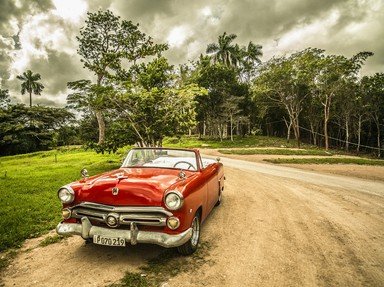Quiz Answer Key and Fun Facts
1. What infamous world leader was responsible for the basic idea of the "Volkswagen", or "Peoples' Car"?
2. Which two miniature BMC/British Leyland sports cars were virtually identical?
3. Speaking of small British sports cars...what other tiny terror from British Leyland was actually split into two entirely different models, very different in character?
4. Humble little Saab, after it had already firmly established its counterculture roots in the 50s and 60s, came out with their own interpretation of a sports car. What was the name of this poetic little number?
5. To cash in on the luxury GT craze of the 70s, the oddball French manufacturer Citroen produced a lusted after model that did quite well, despite its departure from regular exotic car configuration. What was this model, which the Marquis De Sade would have been interested in?
6. The "Metropolitan" was made by what now-defunct American motor car company?
7. When did the Ford Thunderbird abandon the two seater configuration?
8. What exciting, experimental concept car did Chrysler come out with in the early 60s in answer to an as-yet-not-urgent fuel crisis?
9. What post-war engine configuration did the original Austin/Morris Mini pioneer when it was introduced in 1959?
10. There was once a 12 cylinder Jaguar X-KE.
11. Which car was introduced first: the Ford Mustang, the Plymouth Barracuda or the Rambler Marlin?
12. Two famous tunings of the compact Chevy Corvair were produced in the 60s. One was the Fitch Sprint. What was the other?
13. Which two major European marques did the Italian firm of Lancia once share basic bodies with?
14. What was derogatorily considered to be "the fastest truck in the world"?
15. "_____ is out to win you over this year! Follow your heart, see your _____ dealer today!"
Source: Author
Photoscribe
This quiz was reviewed by FunTrivia editor
Bruyere before going online.
Any errors found in FunTrivia content are routinely corrected through our feedback system.
